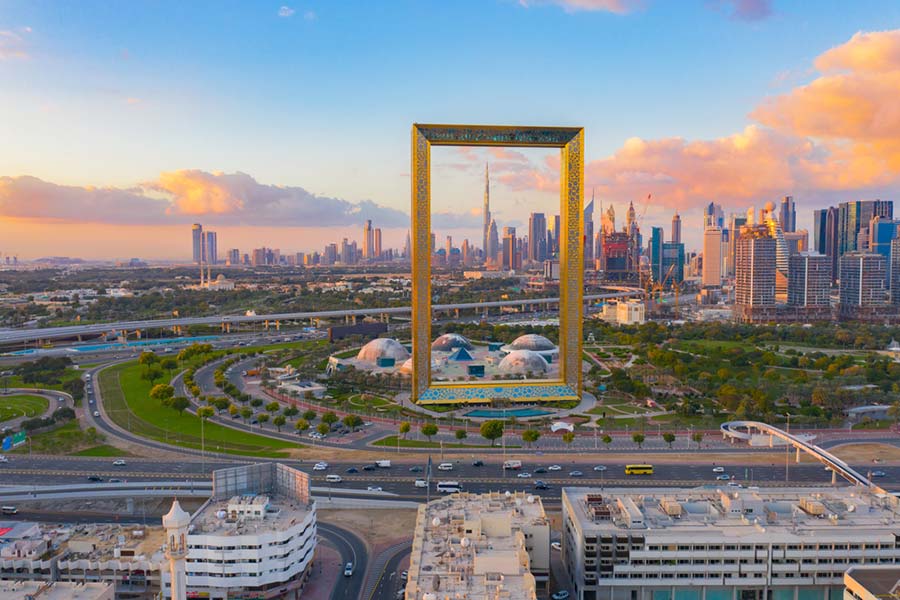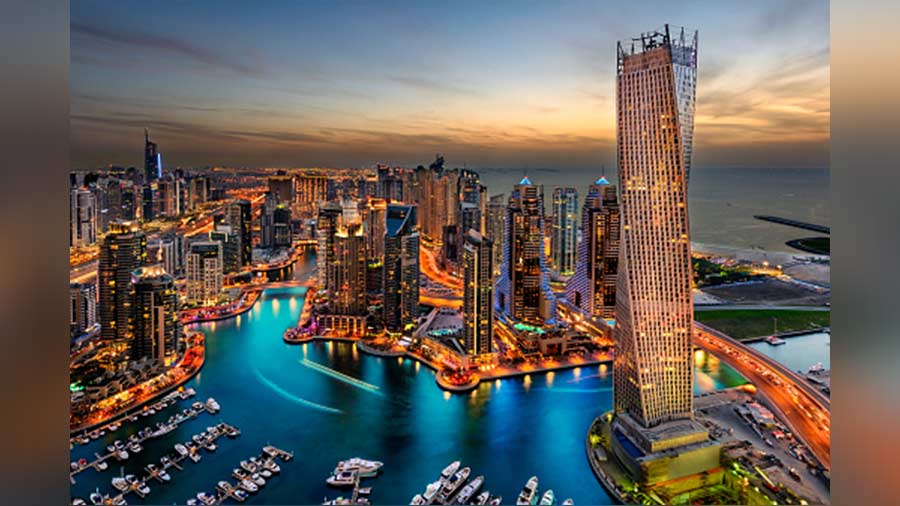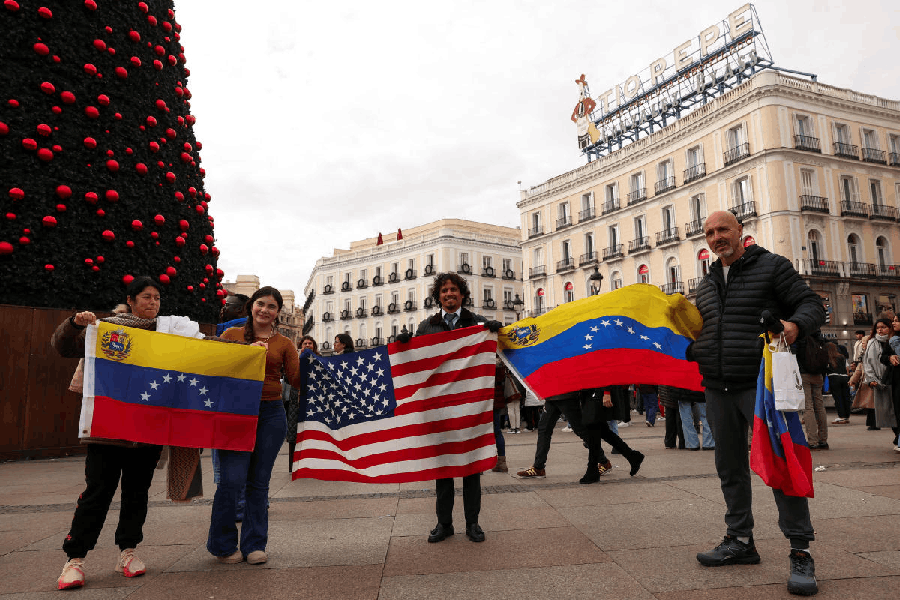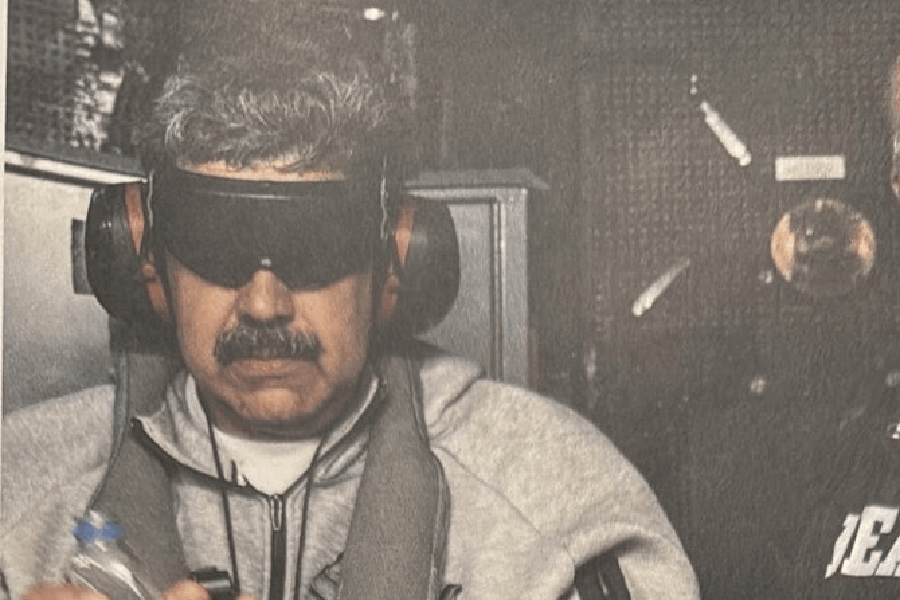A sweeping desert, punctuated by towering dark stone pillars stretching towards the sky, unfurls like a carpet around me. The sun melts into the horizon, painting the sky in strokes of gold and pink before donning a velvety cloak of midnight blue. There are no signs of life for miles, and the deafening silence is broken only by the chilly November wind. All that remains is sand and countless stars.
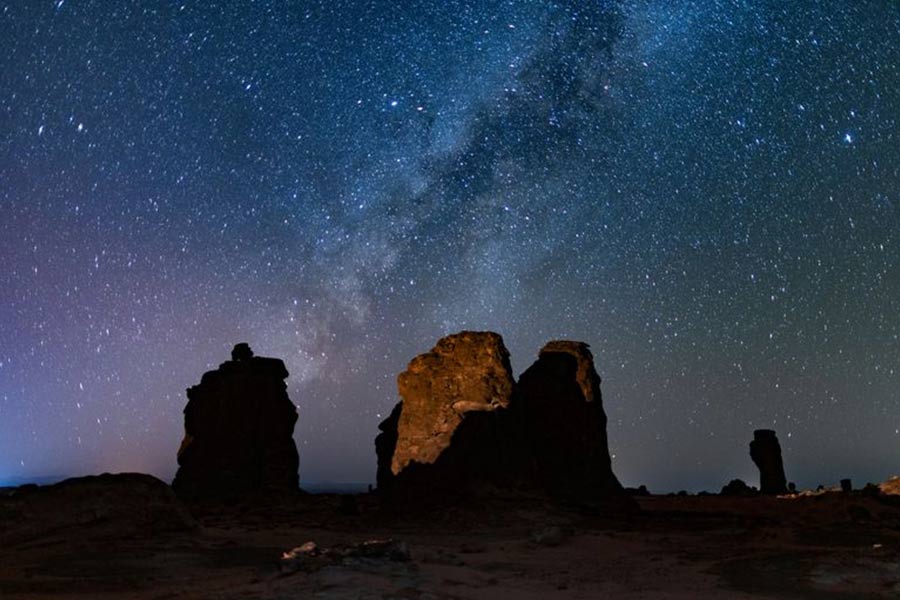
Soak in the beauty of countless starts in the night sky
I’m in AlGharameel Nature Reserve, a place that feels suspended between earth and sky. Reaching Saudi Arabia’s first International Dark Sky Park — certified alongside AlUla Manara — requires an hour-long off-road drive from AlUla in the country’s northwest.
Under the soft glow of moonlight, in the middle of nowhere, my travel companions and I settle onto floor cushions and Persian carpets, sampling tamr (dates) and hot gahwa (Saudi coffee) and soaking in the warmth of a campfire. A distant honk cuts through the quietude, and soon, a bus arrives with tourists eager for a crash course in Arabian astronomy.
Our rawi, a storyteller-guide, from local outfit Husaak Adventures, takes centre stage and regales us with tales of how, for centuries, explorers, pilgrims, and trade caravans navigated the region with the night sky as their trusted tracker. “For the Bedouin, the constellations were more than a map—they were a canvas for stories,” he begins, pointing a laser upwards. Among the countless stars, one shone with a brilliant red glow: Aldebaran, or ad-dabaran, the Follower, often called the Eye of the Bull in the Taurus constellation. “According to legend, he was destined to pursue the Pleiades, Thuraya, a cluster so dazzling it was simply called ‘the Star,’" he continues, first in Arabic, then in English. But their love was doomed. Standing in the way was al-‘ayyuq, the Impeder, a silent sentinel ensuring they would never meet. Even now, as the Follower chases the Pleiades across the heavens, the Impeder lingers — an eternal barrier between them.
He also shares fascinating anecdotes, like how Islamic astronomers proposed that the Earth revolved around the sun five centuries before Galileo and that it rotated on its own axis. The only thing that rivals the storytelling is peering through a giant telescope to study the moon’s craters and Saturn’s rings, followed by an al fresco grill dinner under the stars.
As I return to my retreat at Banyan Tree AlUla, a luxury hotel nestled in the outlying canyons of Ashar Valley, the star-strewn sky remains omnipresent — just as vivid during a late-night wander through the winding desert as from my Bedouin-inspired canopy tented villa. The Bedouins may have lived more modestly, but there’s something humbling about sharing the same celestial view they did centuries ago. I drift between reality and dream, struggling to believe that this breathtaking Middle Eastern landscape remained a well-kept secret until the country opened to international tourism in 2019. Its remoteness and minimal light pollution now make AlUla a prime destination for astrotourism.
Its after-dark allure extends beyond the stars, making it an enviable noctourism, or nocturnal tourism, hotspot. Visitors can hike through Sharaan Nature Reserve under the night sky or experience Hegra After Dark, a theatrical recount of ancient civilisations within Saudi Arabia’s first UNESCO World Heritage Site, Hegra; the latter is a highlight of the Ancient Kingdoms Festival, a Royal Commission for AlUla initiative aimed at fostering tourism.
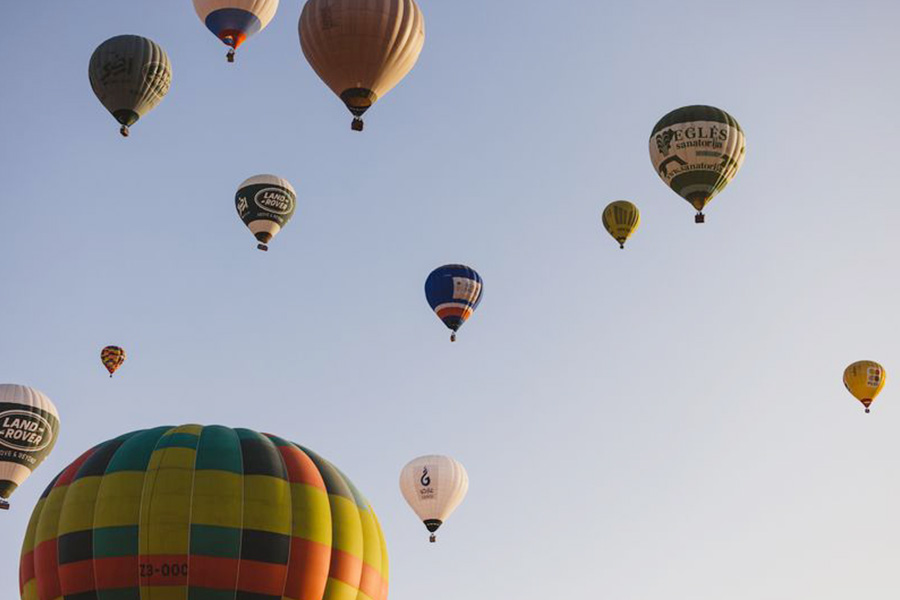
Nothing compares to rising at the crack of dawn to watch the sunrise from a hot air balloon
There’s no dearth of daytime adventures, but nothing compares to rising at the crack of dawn to watch the sunrise from a hot air balloon. As the burner roars above me, sending bursts of fire to steer our course, the ground slowly falls away. At 1,200 metres, a hush settles in—a stillness that only altitude can afford. Below, AlUla reveals itself like a tapestry woven with history and transformation.
A sea of 2.3 million date palms cuts through the golden sands, yielding 90,000 tonnes of dates each year. Beyond them, wind and water have sculpted the region’s warm-hued sandstone over millions of years, creating a landscape so otherworldly it could be mistaken for Mars.
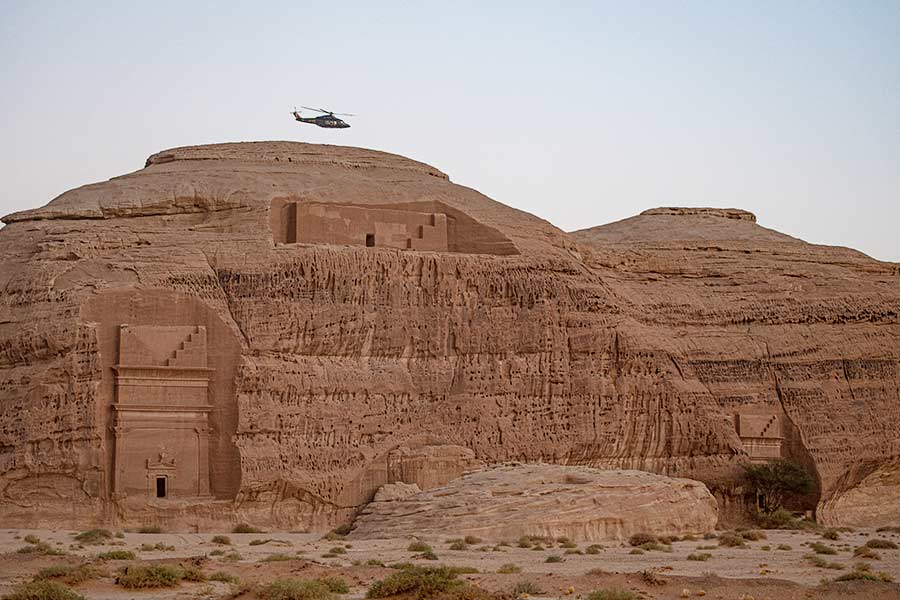
The helicopter tours above Hegra, AlUla, KSA
Then, Hegra comes into view — a silent testament to a millennium of Arabian history. More than just a striking natural wonder, it was once a vital crossroads linking the Arabian Peninsula to the wider world. Like Petra in Jordan, Hegra is a Nabataean marvel, yet it is only now emerging from centuries of obscurity. Its 110 rock-cut tombs and grand façades stand as enduring feats of ancient engineering, whispering stories of a civilisation that shaped the desert.
Just when I think nothing could surpass the hot air balloon ride, a helicopter tour proves me wrong. I’ve taken to the skies twice before — once over Dubai and again in South Australia — but Saudi Arabia offers a different kind of spectacle. From above, familiar sights from my balloon flight reappear, but this time, the perspective shifts, revealing even more.
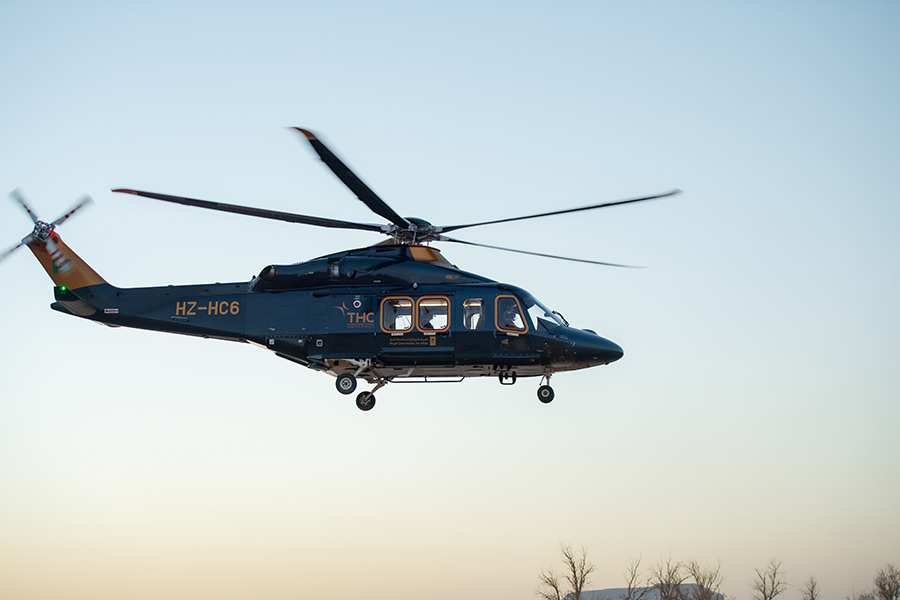
A helicopter tours across AlUla sky
A thin, unwavering line cuts across the landscape — the remnants of the Hejaz Railway that once linked Damascus to Medina. It was commandeered by the Ottoman army during the First World War, only to be sabotaged during the Arab Revolt, with none other than the legendary British officer T.E. Lawrence — Lawrence of Arabia — playing a key role in its downfall.
Below, the world’s largest mirrored building, Maraya, gleams under the sun like a desert mirage. Nearby, Jabal Ikmah — an open-air library of ancient inscriptions and petroglyphs from the Dadanitic civilisation — sits in repose like a meditating yogi. And then there’s Old Town, its carefully preserved mud-brick walls forming a labyrinth, a living memory of AlUla’s storied past.
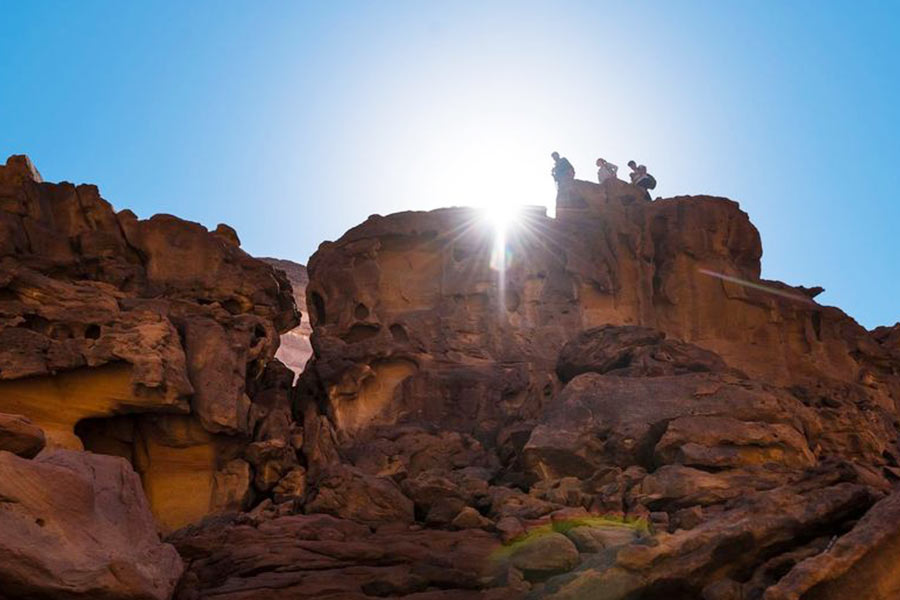
You can enjoy a treasure hunt and a light hike in Wadi AlNaam or the Valley of Ostriches
For the final act, I’m back on solid ground, this time for a treasure hunt and a light hike in Wadi AlNaam, or the Valley of Ostriches, where acacia trees and towering sandstone formations jut from the earth. Equipped with a helmet, hiking stick, and gloves, I climb aboard a desert buggy, joining fellow adventure seekers as we race towards the starting point. Paired into teams, we set off to decode clues leading to hidden treasure.
For me, though, the real prize lies in the ancient rock art. Scattered across the sandstone are carvings of wildlife that roamed this land over 2,000 years ago, alongside inscriptions in Aramaic, Thamudic, Dadanitic, and Arabic, dating from 500 BC to 1100 AD. Following my guide’s instructions, I peer through binoculars, tracing the etched forms — 92 ostriches in total — alongside chariots, symbols of status in their time, much like luxury sports cars today.
“Ostriches were once common in the Arabian Peninsula,” my guide explains, “but they’ve since disappeared from the region.” They lived high in the mountains, only descending to the valley in search of water — where hunters lay in wait, drawn by the value of their meat and feathers.
The carvings offer a window into AlUla’s past, but its present is a story still unfolding. Here, nature and heritage converge, with open-air museums emerging amidst the desert’s timeless expanse — designed to welcome travellers without disturbing the land’s raw beauty.
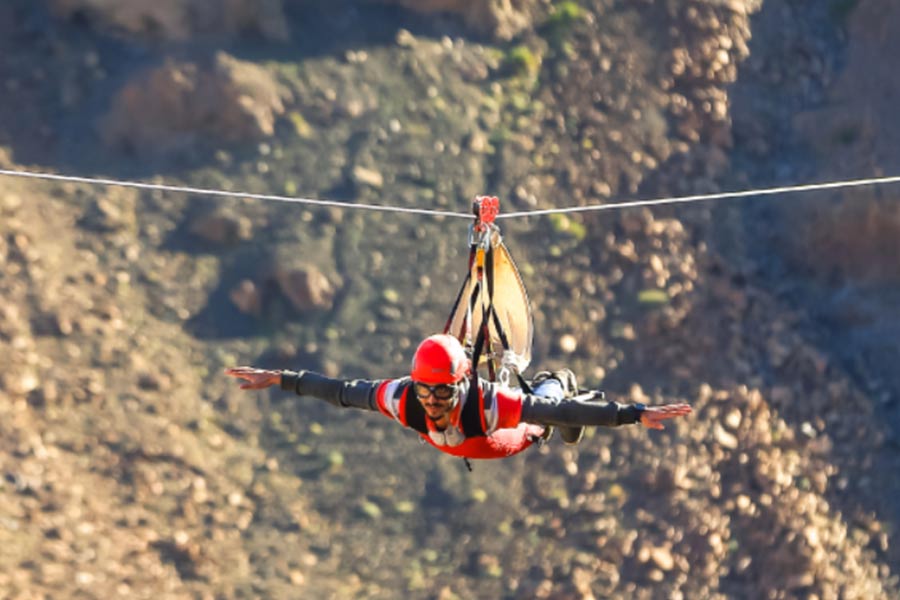
The AlUla Zipline is supposedly the longest and fastest zipline in the country, stretching 1.5 kilometers and reaching speeds of up to 120 kilometers per hour
As my journey through the kingdom nears its end, I realise there’s still more to experience. I have yet to brave the country’s longest and fastest zipline — a 1.5-kilometre rush reaching speeds of 120 kilometres an hour — or climb the 45-metre suspended stairway that hovers daringly above the landscape. Some adventures, it seems, are best saved for next time.
Travel information:
Flights: There are no direct flights between India and AlUla. Connecting flights are available from major Indian cities, including Mumbai, New Delhi, Chennai and Kolkata, with stopovers in Dubai, Doha, or Saudi Arabian cities like Jeddah and Riyadh. Popular airlines include Saudia, Emirates, Flynas and Qatar Airways.
Visa: Indian travellers can apply for an e-visa or visa on arrival (approx. ₹8,000) or an offline visa (approx. ₹15,000).
Best time to visit: AlUla is a year-round destination, but the most pleasant months are October to mid-May.


